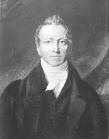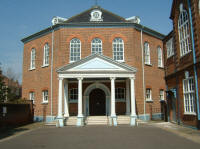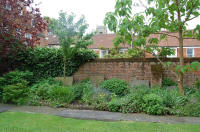| William Taylor
(1765-1836) William Taylor was born in Norwich on the
7th November 1765 - the son of a wealthy manufacturer.
He was educated at Palgrave in Suffolk and as a young
man toured Europe learning foreign languages - most
importantly German.

Portrait of William
Taylor
Taylor was an important
translator of German literature, tackling works by both
Goethe (who he met twice) and Burger. His translations
were influential with the romantic poets such as
Wordsworth and Coleridge. Robert Southey was also one of
his close friends.

Octagon Chapel,
Norwich.

Graveyard at Octagon
Chapel
Taylor was part of the non-conformist,
radical group in Norwich - which worshipped at the
Octagon Chapel in Colegate. The chapel was designed by
Thomas Ivory and became known locally as 'the devil's cucumber frame'. For some time
Taylor taught German at the King Edward VI Grammar
School in the Cathedral Close - and George Borrow was
one of his pupils. In chapter 23 of Lavengro -
Borrow records his debt to Taylor who was clearly an
early influence for him. Taylor was also responsible for
inviting John Polidori
to Norwich when a vacancy for a physician arose
following the retirement of a member of the Martineau
family.
Taylor was well acquainted with many of
the Norwich School
Painters and gave lectures to the Norwich
Philosophical Society on art. In 1814, he advocated that
architecture and townscapes should be considered higher
subjects than scenes of rural life. This comment was
almost certainly a aimed at John Crome.
Taylor was a bachelor who lived with his
parents and had a reputation for being a heavy drinker.
He also liked
to take a swim in the River Wensum every afternoon. Fellow Norwich writer
Harriet Martineau had this to say
about him:
|

